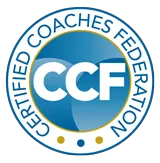Blog
Your Coaching Compass:
Navigating Success Together
Every story, every insight, every tip is curated with one goal: to guide you towards coaching success and personal fulfillment.
Receive weekly newsletter by signing up below:

Blog
Your Coaching Compass:
Navigating Success Together
Every story, every insight, every tip is curated with one goal: to guide you towards coaching success and personal fulfillment.
Receive weekly newsletter by signing up below:

FREE QUIZ
Do You Have What It Takes To Become A Life Coach?
Find out now by taking our Coaching Profile Quiz! Takes less than a minute to get your results.


7 Ways To Create Emotional Safety
7 ways to create emotional safety
Emotional safety is essential to building a relationship with clients in coaching. As an author of online articles states, "Emotional safety is feeling secure enough to truly express yourself with someone and show up as your most authentic self." This quote highlights the importance of creating a feeling of ease, comfort, and security for clients to express themselves fully and reach their full potential.
In today’s article, it’s our job at the Certified Coaches Federation to teach you some important ways to help you create emotional safety and stability in your coaching relationships.
As coaches, we want to engineer a safe space, where our clients feel as secure as possible, so they can be themselves. In this way, they will be able to open up to you and you’ll be able to relate to them in a coaching-client relationship. Such a safe relationship will make your client open up about their desires, objectives and needs.
So, let’s talk about emotional safety, how you can nurture it and the seven ways for creating it!
What is emotional safety?

Emotional safety refers to the emotional state in which an individual feels at ease, comfort, and free from fear, resentment, apprehension, or other negative emotions. In coaching, emotional safety is present when rapport is established between the coach and the client. On the other hand, emotional safety is absent when rapport is broken.
When the rapport is broken, the client won’t reveal thoughts and feelings. If the rapport is broken, the client will feel unsafe and won’t share to the extent of their capabilities. They will start loathing the idea of a new coaching session coming their way and will do everything in their power to stall or cancel sessions.
When is emotional safety missing from the picture?

Emotional safety is usually missing from the picture when the client is unwilling or unable to open up so they just hold back. They deflect, hesitate and won’t answer the question you ask them.
Also, an unwilling or vulnerable client will usually close up and steer away from a great relationship between the coach and themselves.
If you see that your client is rarely expressing their thoughts or emotions, this is a sign that emotional safety is missing from the picture.
Discomfort is the foundation for growth

The emotional safe space is important because it enables you, as a coach, to create discomfort. Discomfort is created when the right question is asked, but its answer is one that requires introspection and admitting to a certain mistake or mishap.
Discomfort for some is undesirable, but real discomfort is the foundation for growth. That discomfort that you create, as a coach, shouldn’t be a criticism. Coaches shouldn’t blame or throw their clients under the bus.
But coaches need discomfort in their relationship with a client in order to have those tough, powerful conversations which really acquire growth!
Coach-led but client-centric sessions

Coaching sessions are a constant in your clients’ life. They should be looking forward to them, as they experience growth and change through those sessions.
Every session should be coach-led but client-centric. That means that you start off the conversation as a coach and you lead the subjects, but everything has to done with the client in mind and they should have the scene for discussion.
If you as a coach hog the conversation and talk about your day and how one of the situations you’re discussing directly relates to your client’s problem - it’s not a client-centric session.
Focus your attention on your client and everything will work out fine in the end. Now, let’s see how you can create emotional safety through the seven ways already mentioned:
The seven ways to create emotional safety
Practice self-awareness

Practising self-awareness in a coach-client relationship starts with yourself. Before the coaching starts, ask yourself: Am I in the right mindset? Do I have the right energy for this?
All coaches may relate to a moment when they didn’t feel 100% up to the task, but they still did it because of this self-awareness exercise.
After you’re done with yourself and the session starts, make sure to do the same with your client. Ask them about how they’re feeling and if they feel that it is the right moment for some hard discussions or if you should just start off slow and build from there.
This way, you’ll empower your client through self-awareness!
Listen actively

Listening is a big part of your job as a coach. Actually, is the biggest part. Remember the coach-led, client-centric discussion we had in this article? Well, listening actively will help you to have those client-centric coaching sessions where you really build trust.
We don’t listen to hear only what’s being said. We want to see what is happening behind the words, because there will be more information than we can get from just the conversation.
Many times you’ll sense, as a coach, that there is something wrong with the client and they’re not saying everything there is to be said.
Listen actively in order to sense that and proactively find a solution together.
Offer transparency

Transparency is needed in an emotionally safe medium. Don’t try to fool your client by selling them extra packages every session or not being totally honest with them.
The lack of transparency usually opens rifts between clients and coaches which are very hard to seal back.
Be open to individual differences

In this day and age, individual differences are finally being understood and cherished. Don’t let your religion or your ethnicity stand in the way of your relationship.
As a coach, use those individual differences to create a safe space for your client. At the end of the day, our differences only make us human!
Provide a consistent experience to the client

People work best on habits. We want to know that every Wednesday, from 6 P.M., we are putting time aside for our well-being through our coaching session. This is why as a coach, you have to provide a consistent experience to your client.
Show up, come with helpful advice and be the stable point in your client's life - this consistent experience will matter the world to them!
Be specific

The sixth way to create emotional safety is by being specific when you ask questions or need certain information. This way, you’re sure nothing escapes your sight and you won’t miss important information because you didn’t ask the right question.
Be non-judgmental

The last way for creating an emotionally safe space for your client is to be non-judgmental. You should keep in mind that the speed at which certain people solve tasks or how they choose to do something is different. It is just the same with your clients.
In this case, don’t be judgemental. Understand the pace at which they’re being their best self and roll with it.
Creating emotional safety in coaching is crucial for building a relationship with clients and fostering growth and change. By practising self-awareness, actively listening, offering transparency, being open to individual differences, providing a consistent experience, being specific, and being non-judgmental, coaches can create an environment in which clients feel secure and comfortable enough to express themselves fully and reach their full potential.
certifications / TRAININGS
certifications / TRAININGS
CERTIFIED COACHES FEDERATION | TERMS OF USE | PRIVACY POLICY
